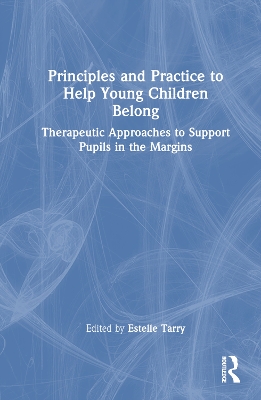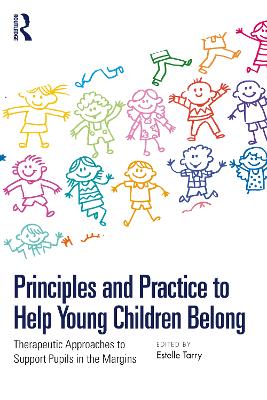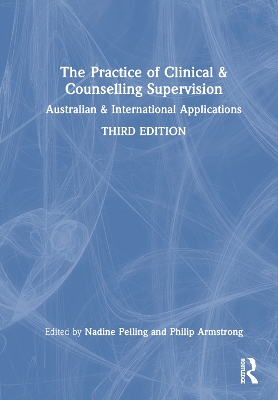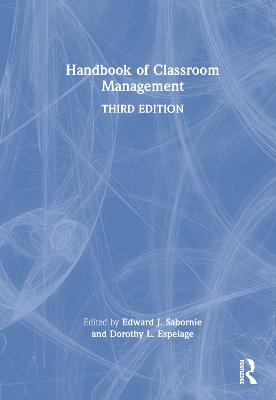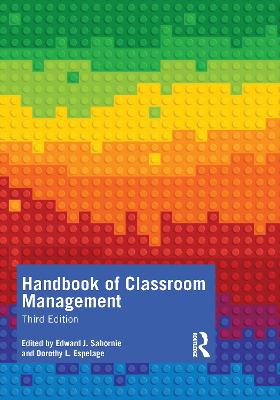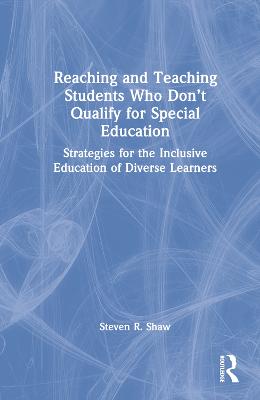Routledge Handbook of Inclusive Education for Teacher Educators
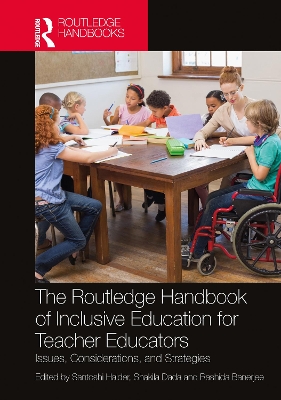 portes grátis
portes grátis
Routledge Handbook of Inclusive Education for Teacher Educators
Issues, Considerations, and Strategies
Banerjee, Rashida; Halder, Santoshi; Dada, Shakila
Taylor & Francis Ltd
11/2024
680
Mole
9781032209500
15 a 20 dias
Descrição não disponível.
Foreword by Richard Rose. Introduction: 1. Preparing Teachers for Inclusive Classroom: Challenges, Lacuna and Future Direction PART I: Foundational and Conceptual Considerations 2. Foundational and Legal Basis for Inclusive Education and Future Directions 3. Universal Design and Inclusive Participation 4. Parent Perspectives and Beliefs on Inclusive Education for Students with Intellectual Disability 5. Attitudes of People without Disabilities towards Peoples with Disabilities: Perspectives of Higher Education Students 6. Translating Statutory Guidance into Inclusive Practice in the Classroom: The Case of England 7. Attitudes Towards an Unfamiliar Peer with Complex Communication Needs Using an iPad (TM) with AAC Software and a Communication Board: Perspectives of Adolescents with Physical Disabilities PART II: Cross-Cultural and Global Perspectives 8. Right to Inclusive Education for Children with Disabilities: Exploring the Gap through the Indian and Canadian Legal Prism 9. Paradoxes of Inclusion and Segregation Through the Lens of Students and Teachers: Perspective from Japan 10. Participation of Children with Disabilities and Their Peers in Low-and Middle-income Countries: Comparison of Children with and without Disabilities 11. Perceived Strengths of Autistic People and Roadmap for Intervention: Parents' and Practitioners' Perspectives 12. Inclusive Classrooms as Thinking Spaces for Teachers and Students PART III: Identification and Assessment 13. Conceptual, Identification, and Assessment of Students with Diverse Needs 14. Issues and Trends in Assessment in Early Childhood Intervention for Diverse Populations 15. Paradigm Shift in Identification and Assessment of Neurodiverse People: A Review 16. Identification of Possible Learning Problems in Children with Intellectual Disabilities 17. Brain-Behaviour Relationship in Attention-Deficit Hyperactivity Disorder: A Microanalysis 18. Prenatal, Perinatal, and Postnatal Maternal Risk Factor for Autism Spectrum Disorder: Need to Understand the Genetic-Environment Intersect 19. Utilizing Assessment to Build Partnership Between Students with ID, Families, and Educators PART IV: Evidence-Based Interventions and strategies 20. Application of Applied Behavior Analysis Based Intervention Strategies for Diverse Learners 21. Augmentative and Alternative Communication for the Classroom 22. Intervention for the Remediation of Dyslexia: A Systematic Review 23. The Efficacy of Literacy Interventions for Students who Use Augmentative and Alternative Communication 24. Music Puzzle: A Game to Support the Sound Environment of the Deaf and Hard of Hearing Students 25. Video Modeling Interventions at Schools; a guide for teachers and practitioners 26. Inclusion of Students with Physical Disabilities in Activities Outside the Classroom 27. Getting the Word Out: How Teachers Can Recognize and Support Children with Language Difficulties in an Inclusive Classroom 28. Selecting Assistive Technology for the Classroom PART V: Practice-Based Considerations 29. Strategies for Implementing Augmentative and Alternative Communication in the Classroom Setting in Low- and Middle-Income Countries 30. Suicide Ideation and Prevention in Students with Intellectual Disabilities 31. Functional Seating in the Classroom for Children with Disabilities 32. The Role of Inclusive Teaching and Creating Learning Experiences for Children with Visual Impairments and Multiple Disabilities 33. The Use of Telepractice to Support Teachers in Facilitating Learning for Children with Communication Disorders: A South African Proposal 34. Inclusion of Students with a Hearing Loss in the Classroom 35. Intervention with Children with Severe Disabilities PART VI: Transition after School, Vocation, and Independent Living Support 36. School-Based Transition Programming to Improve Employment Outcomes for Youth with Disabilities 37. Empowering Inclusive Classrooms in Higher Education: The Case of a Multidimensional Peer Support Model 38. Studying Environment for Visually Impaired Students in Computer Science Course in Japan 39. Intervention for People with Cerebral Palsy (CP): Steps Towards Self-Reliance 40. Inclusion of Individuals with Severe Disabilities in Vocational Training Conclusion: 41. Being Pushed and Pulled: Making Sense of Inclusive and Exclusive Force
Este título pertence ao(s) assunto(s) indicados(s). Para ver outros títulos clique no assunto desejado.
Inclusive Education;ICF;AAC System;ASD;CRPD;DHH Student;Inclusive Classroom;Education System;Vice Versa;Speech Language Therapists;Inclusive Settings;ICF Framework;Autistic People;TVET College;AAC Application;Profound Id;DHH Child;Augmented Input;ICF Category;ICF Core Set;Common Language;Low Resource Contexts;VSD;School Mental Health Providers;American Speech Language Hearing Association
Foreword by Richard Rose. Introduction: 1. Preparing Teachers for Inclusive Classroom: Challenges, Lacuna and Future Direction PART I: Foundational and Conceptual Considerations 2. Foundational and Legal Basis for Inclusive Education and Future Directions 3. Universal Design and Inclusive Participation 4. Parent Perspectives and Beliefs on Inclusive Education for Students with Intellectual Disability 5. Attitudes of People without Disabilities towards Peoples with Disabilities: Perspectives of Higher Education Students 6. Translating Statutory Guidance into Inclusive Practice in the Classroom: The Case of England 7. Attitudes Towards an Unfamiliar Peer with Complex Communication Needs Using an iPad (TM) with AAC Software and a Communication Board: Perspectives of Adolescents with Physical Disabilities PART II: Cross-Cultural and Global Perspectives 8. Right to Inclusive Education for Children with Disabilities: Exploring the Gap through the Indian and Canadian Legal Prism 9. Paradoxes of Inclusion and Segregation Through the Lens of Students and Teachers: Perspective from Japan 10. Participation of Children with Disabilities and Their Peers in Low-and Middle-income Countries: Comparison of Children with and without Disabilities 11. Perceived Strengths of Autistic People and Roadmap for Intervention: Parents' and Practitioners' Perspectives 12. Inclusive Classrooms as Thinking Spaces for Teachers and Students PART III: Identification and Assessment 13. Conceptual, Identification, and Assessment of Students with Diverse Needs 14. Issues and Trends in Assessment in Early Childhood Intervention for Diverse Populations 15. Paradigm Shift in Identification and Assessment of Neurodiverse People: A Review 16. Identification of Possible Learning Problems in Children with Intellectual Disabilities 17. Brain-Behaviour Relationship in Attention-Deficit Hyperactivity Disorder: A Microanalysis 18. Prenatal, Perinatal, and Postnatal Maternal Risk Factor for Autism Spectrum Disorder: Need to Understand the Genetic-Environment Intersect 19. Utilizing Assessment to Build Partnership Between Students with ID, Families, and Educators PART IV: Evidence-Based Interventions and strategies 20. Application of Applied Behavior Analysis Based Intervention Strategies for Diverse Learners 21. Augmentative and Alternative Communication for the Classroom 22. Intervention for the Remediation of Dyslexia: A Systematic Review 23. The Efficacy of Literacy Interventions for Students who Use Augmentative and Alternative Communication 24. Music Puzzle: A Game to Support the Sound Environment of the Deaf and Hard of Hearing Students 25. Video Modeling Interventions at Schools; a guide for teachers and practitioners 26. Inclusion of Students with Physical Disabilities in Activities Outside the Classroom 27. Getting the Word Out: How Teachers Can Recognize and Support Children with Language Difficulties in an Inclusive Classroom 28. Selecting Assistive Technology for the Classroom PART V: Practice-Based Considerations 29. Strategies for Implementing Augmentative and Alternative Communication in the Classroom Setting in Low- and Middle-Income Countries 30. Suicide Ideation and Prevention in Students with Intellectual Disabilities 31. Functional Seating in the Classroom for Children with Disabilities 32. The Role of Inclusive Teaching and Creating Learning Experiences for Children with Visual Impairments and Multiple Disabilities 33. The Use of Telepractice to Support Teachers in Facilitating Learning for Children with Communication Disorders: A South African Proposal 34. Inclusion of Students with a Hearing Loss in the Classroom 35. Intervention with Children with Severe Disabilities PART VI: Transition after School, Vocation, and Independent Living Support 36. School-Based Transition Programming to Improve Employment Outcomes for Youth with Disabilities 37. Empowering Inclusive Classrooms in Higher Education: The Case of a Multidimensional Peer Support Model 38. Studying Environment for Visually Impaired Students in Computer Science Course in Japan 39. Intervention for People with Cerebral Palsy (CP): Steps Towards Self-Reliance 40. Inclusion of Individuals with Severe Disabilities in Vocational Training Conclusion: 41. Being Pushed and Pulled: Making Sense of Inclusive and Exclusive Force
Este título pertence ao(s) assunto(s) indicados(s). Para ver outros títulos clique no assunto desejado.
Inclusive Education;ICF;AAC System;ASD;CRPD;DHH Student;Inclusive Classroom;Education System;Vice Versa;Speech Language Therapists;Inclusive Settings;ICF Framework;Autistic People;TVET College;AAC Application;Profound Id;DHH Child;Augmented Input;ICF Category;ICF Core Set;Common Language;Low Resource Contexts;VSD;School Mental Health Providers;American Speech Language Hearing Association

